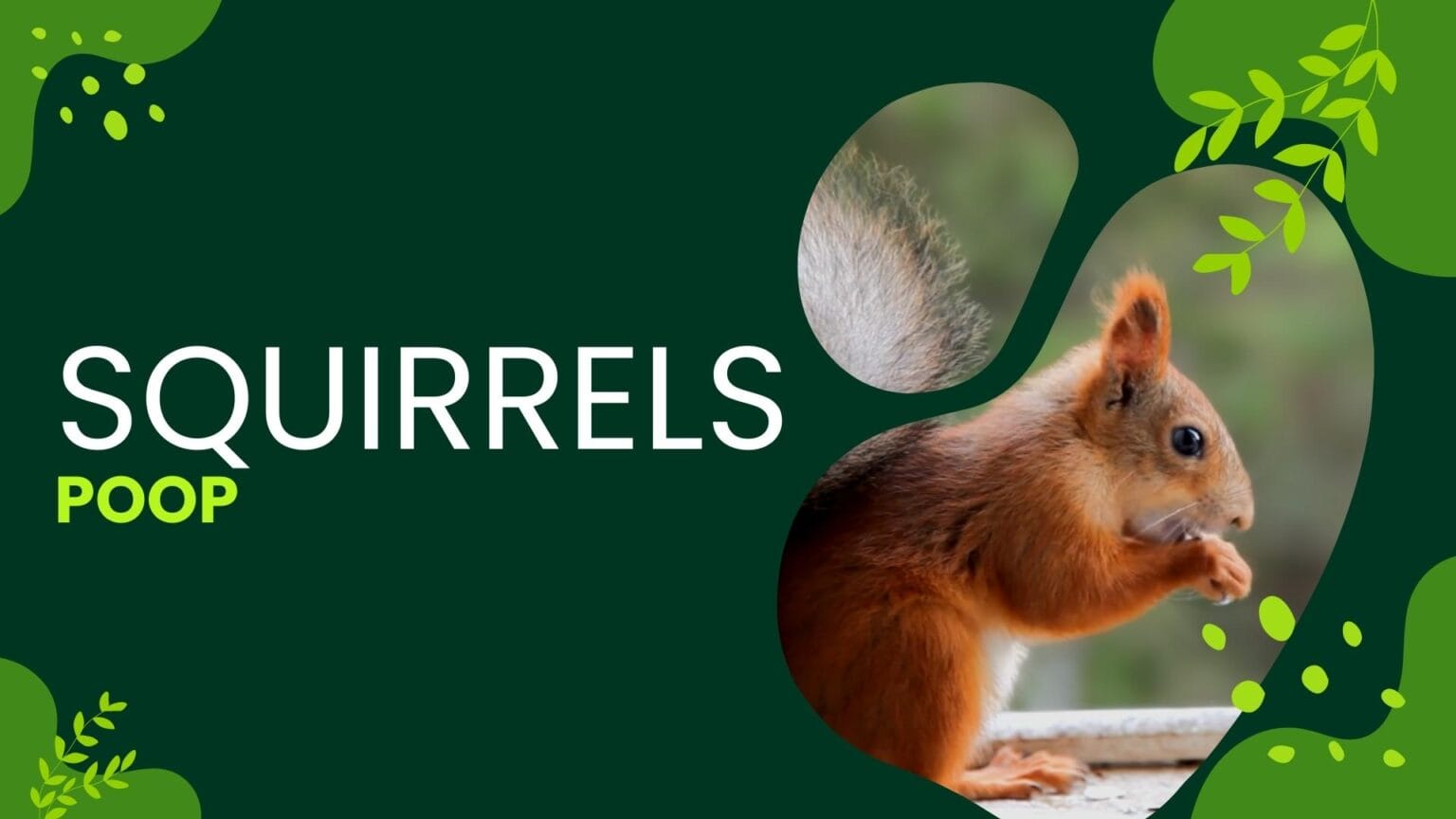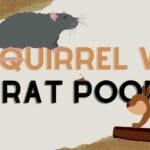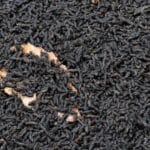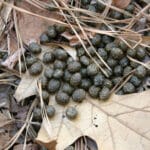Found some mystery poo around your house? Don’t panic! Identifying the culprit—squirrel or rat—is the first step towards effective pest control. This comprehensive guide helps you differentiate between squirrel and rat droppings, providing visual clues and expert insights to solve the case.
Spotting the Difference: Key Characteristics
Identifying the difference between squirrel and rat droppings is crucial for effective pest management. Knowing what you’re dealing with allows you to target your efforts and choose the right solutions. Let’s examine the telltale signs.
Size and Shape: A Tale of Two Tails
While both squirrel and rat droppings measure roughly ⅜ inch long, there’s a subtle difference in their girth and form. Squirrel droppings are typically thicker, resembling tiny, dark brown barrels, plump raisins, or even jelly beans – cylindrical with rounded ends. Rat droppings, however, are more slender and elongated, with pointed, almost sausage-like tips. Think of dark, skinny grains of rice.
Color Clues: Fresh vs. Old
Color can be a helpful clue, particularly with fresh droppings. Fresh squirrel poo is usually a dark, reddish-brown, similar to milk chocolate. Rat droppings, on the other hand, are much darker, almost black when fresh. As both types of droppings age, they tend to lighten, making color a less reliable indicator over time.
Texture: Smooth Operator or Rough Rider?
Texture provides another subtle clue. Squirrel droppings often have a ragged, uneven texture, a bit like a miniature, dark brown granola bar. Rat droppings are typically smoother and more uniform, closer to the smooth surface of dark chocolate.
Location, Location, Location
Where you find the droppings can be a significant clue. Squirrels, being agile climbers, often leave their calling cards in attics, garages, or near trees, often in piles called middens. Rats, preferring to scurry closer to the ground, tend to scatter their droppings near food sources, inside walls, in basements, or under appliances. Droppings in your attic likely suggests squirrels, while droppings under the sink may point towards a rat problem.
Dropping Distribution: Piled or Scattered?
The distribution pattern of the droppings can also be telling. Squirrel droppings are often found in piles or heaps, especially in their middens. Rat droppings, however, are typically more dispersed or spread out along their runways.
| Feature | Squirrel Droppings | Rat Droppings |
|---|---|---|
| Shape | Cylindrical, rounded (barrel, raisin, jelly bean) | Elongated, tapered ends (like a grain of rice) |
| Size | Approximately 3/8 inch long, about 1/8 inch thick | Approximately 3/8 inch long, thinner than squirrel poop |
| Color (Fresh) | Dark reddish-brown (like milk chocolate) | Dark brown to black |
| Texture | Rugged, uneven | Smooth, uniform |
| Location | Heaps in attics, garages, near trees | Scattered near food, basements, walls, appliances |
| Distribution | Piled, clustered | Dispersed, scattered |
Why Proper Identification Matters
Correctly identifying squirrel droppings vs. rat droppings is essential for targeted pest control. Different rodents are attracted to different traps and baits. What works for a squirrel might not work for a rat, and vice versa. Additionally, knowing the type of rodent helps assess potential health risks, as both can carry diseases. Proper identification enables you to take the right action, protecting your home and family. It also allows you to accurately assess the severity of the infestation.
Delving Deeper: Advanced Identification Techniques
While the characteristics above are generally reliable, some experts believe that factors such as the animal’s diet and individual variations might slightly influence the appearance of the droppings. Ongoing research continues to explore these nuances.
Freshness: A Telltale Sign
Fresh droppings, whether from a rat or a squirrel, are typically darker and softer. As they age, they dry out and harden. Squirrel droppings will lighten in color as they age, while rat droppings will retain their dark hue but become more firm.
Combining Clues: The Dropping Detective
By considering all these factors—shape, size, color, texture, location, and freshness—you can confidently differentiate between rat and squirrel droppings. Sometimes one clue alone may not be enough, but when combined, they paint a clearer picture.
Other Signs of Rodent Activity
- Gnaw Marks: Squirrels typically gnaw on entry points and nuts, while rats will nibble on almost anything.
- Nesting Habits: Squirrels often build leafy nests called dreys in attics or trees, while rats prefer hidden burrows in walls or under appliances.
- Sounds: Squirrels are generally more vocal during the day, whereas rats are more nocturnal, making scurrying or squeaking noises at night.
- Footprints and Runways: Look for tracks and trails, which can often provide further clues to the rodent’s identity.
What About Droppings in the UK?
The characteristics of rat and squirrel droppings are generally consistent across different regions, including the UK. However, regional variations in diet and environment might lead to subtle differences. For instance, some research suggests that rat droppings in the UK can sometimes be slightly larger than those found elsewhere.
If You’re Still Unsure…
If you encounter something unusual, like what you suspect might be nerite snail eggs or even a raccoon baculum, further investigation is warranted! And if you’re still unsure about the rodent droppings, consulting with a pest control professional can provide expert identification and management strategies. They can definitively identify the droppings and recommend the most effective course of action.
Remember, accurate identification is the key to effective pest management. By understanding the nuances of rodent droppings, you’ll be well-equipped to address any unwelcome guests in your home.
- Senior at What Age: Benefits & Eligibility Guide - March 29, 2025
- Unlocking Senior Benefits: How Old is a Senior? Your Complete Guide - March 29, 2025
- Master Russian Politeness:A Guide to Saying Please - March 29, 2025

















1 thought on “Squirrel Droppings vs. Rat Droppings: The Ultimate Identification Guide (with Pictures)”
Comments are closed.